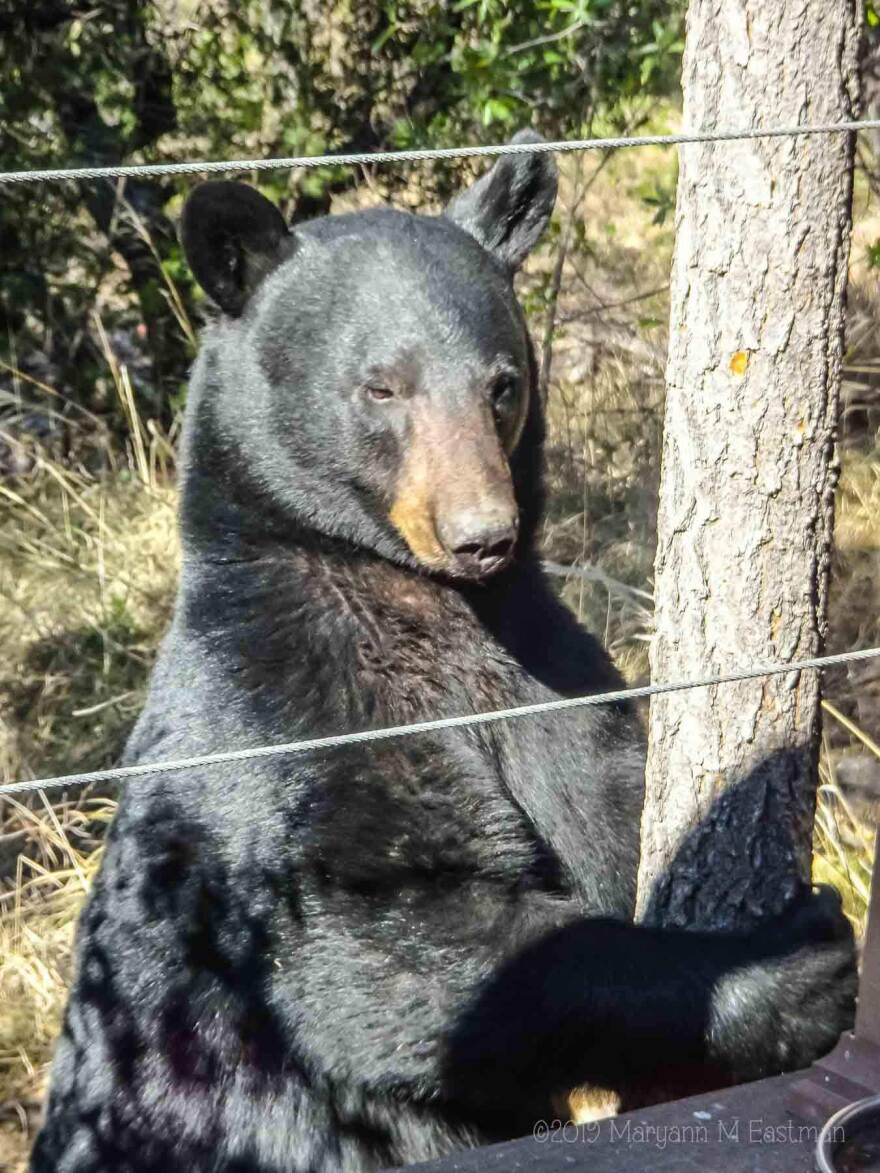There's nothing like the presence of an apex predator – an animal that could make a meal of you – to focus the attention. Davis Mountains residents had that experience in 2018 and 2019, when, for several months, black bear sightings became a regular occurrence.
It brings home a wild West Texas reality. Black bears had been exterminated here by the 1960s. Now, this is once again bear country.
Gary Freeman has lived in the sky-island woodlands of the Davis Mountains Resort since 2006.
“In 2016, I first saw two black bears on our property,” Freeman said. “In 2017-2018, there were no sighting of bears, at least around our property. Things changed radically in 2018-2019.”
Occasional bear sightings began here in the 90s. But in 2018, a bear – or bears – set up what Freeman described as a “trapline” in the resort, running a circuit from house to house. The mountains are a hot spot for birds, particularly hummingbirds, and residents have long delighted in feeding the birds, and, in some cases, other wildlife. Now, a bear was using that feed to bulk up for winter.
Marc and Maryann Eastman, long-time resort residents and talented bird photographers, had close encounters with the bear. As did Edna Queen.
“I literally watched the bear pick up a 5-gallon bucket full of birdseed, carry it across the fence, sit down, pry the lid loose, and just start eating,” Queen said. “He was completely happy.”
Queen had the arresting experience of stepping on to her porch one night – and finding herself 3 feet away from a bear.
Todd Jagger, who lives in high country near the resort, was hit hard. A bear destroyed deer blinds, a canvas teepee, and a chicken coop – and dined on a chicken. It feasted at Jagger's deer feeders, and broke into his garage.
“Long-term, what do we do to protect the wildness of these creatures that belong here, and should be here, and should thrive here, and the people that just simply want to be safe?” Jagger asked.
Texas Parks and Wildlife biologist Will Rhodes said Jagger is asking the right question. Rhodes himself lives in the resort.
“Considering that this was historically bear country, there's absolutely reason to believe it's going to be bear country again,” Rhodes said. “I personally believe it is now.”
The Davis once had the highest concentration of bears in the state. In the early 20th century, one ranching family here killed 45 bears on their property – in a single winter.
Bear control eased as sheep and goat production faded in the Trans-Pecos. In the 90s, bears began to arrive in Big Bend from the Carmen Mountains in Mexico.
But the Davis are not only drawing bears from the south. In 2019, a photograph taken here captured a bear with an ear tag. It had been placed on the animal in the Guadalupe Mountains – 15 years earlier.
“We believe that this area is actually kind of an epicenter,” Rhodes said. “What we're seeing is a population coming down from the Guadalupes, and the populations coming up from the Chisos and Mexico, and we just happen to be this focal point.”
The sky islands are prime bear habitat. But these resourceful omnivores aren't solely woodland creatures. They've returned to harsher country, like Black Gap Wildlife Management Area, where they feed on prickly pear tunas, sotol bulbs, juniper berries and other plants, along with small mammals. And these desert-mountain bears are formidable creatures – a male can weigh 400 lbs.
Rhodes said the 2018-2019 experience shouldn't be viewed as an anomaly. While he doesn't insist local residents stop feeding birds – he does urge them to take feeders in at night, to place them away from homes, or to surround feeders with electrified wire. Trash should never be left out. A bear that associates human structures with food may one day enter one of those structures.
And once a bear is identified as a “problem animal,” its days are numbered.
“Unfortunately, that's going to fall on us, the biologists, to do that,” Rhodes said of euthanizing bears, “and we really don't want to do that. We want to see the bear populations return and flourish, and living alongside people. And we can do that with education.”
Far West Texans will need to embrace that education, to coexist with these charismatic animals.




